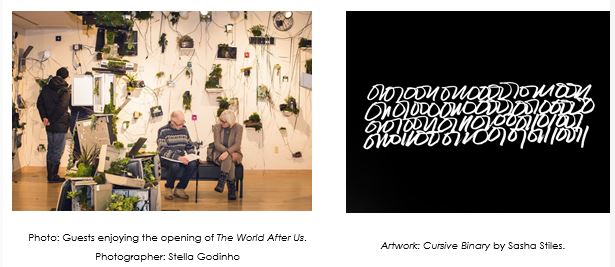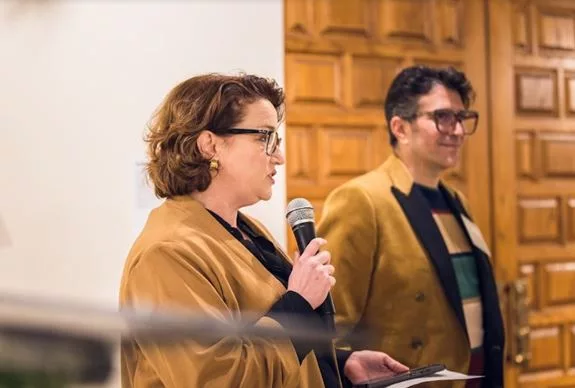The Krasl Arts Center is highlighting two of its exhibitions. Director Tami Fauver tells us more:
This month, Krasl Art Center features two exhibitions in its galleries that consider the future: The World After Us: Imaging techno-aesthetic futures by artist Nathaniel Stern, and Are You Ready for the Future? A Poetic Inquiry by poet, AI researcher, and artist Sasha Stiles. The exhibits arrive at a critical moment when conversations have turned intensely to the digital realms and what they mean for the future of art. Stern & Stiles are asking: what happens when we make art with the future? How can we collaborate, find commonalities, influence, subvert, redirect?

Both artists’ approaches are rooted in the humanities of art and language. Nathaniel Stern’s visually explosive exhibit was inspired by the book, The World Without Us by Alan Weisman published in 2007. Sasha’s deeply thoughtful work is driven foremost by her position in the world as a poet.
In their creative practices, both artists actively imagine the future by playing with it, interacting with it, asking it and us important questions. For example, Stern is working with scientists to turn e-waste into biochar to see if it can be used to improve soil fertility. He is breaking down old phones and turning the powder into ink for printmaking. Sasha is mentoring an AI android to learn poetry and, with it, writing generative poems on the gravitas of this act – to teach a machine what you want it to know. Neither artist is naive or oppositional, but rather consciously collaborative.
Their inquiries and collaborations result in art that is intriguing and beguiling. And just like both artists began with literature, they end, in this instance, with the physical display of their projects in a museum. This context provides a welcomed moment for us to step back from our screens, enter the galleries, and ponder the future at a slower pace. With Stern’s exhibit, there is this wonderful moment of instantly associating old phones, keyboards, record players, and other fascinating e-waste with personal memories. It takes a longer, more sustained effort to read the text, listen to the audio, and absorb the questions the exhibit is probing. Stile’s exhibit presents a transhuman poetry reading room.
This is a mouthful that requires a moment to even comprehend. It requires time with the materials, active consideration, and again, delving into what the artist is exploring. In turn, both artists yield rich gateways to new thinking and insight about the future and its possibilities. They have captured the fundamental power of art to help us see, process, perceive, and think differently.






